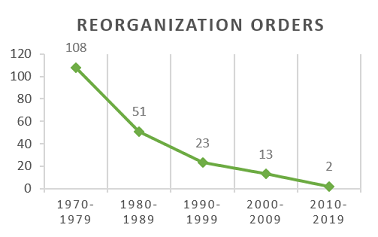Throughout Minnesota's history, executive branch agencies have come, gone, or been altogether re-worked as the needs of the state and the demands on state government change. Agencies that today we take for granted as long standing entities haven't always been around.
Take for example the Minnesota Department of Transportation (MnDOT) which has, by that name, only been around since 1976. But of course the state was engaged in transportation matters long before the 1970s.
A state constitutional amendment passed by voters in 1898 authorized the legislature to provide the governor authority to appoint three members to a new State Highway Commission. The legislature took no action until 1905; the State Highway Commission was organized in 1906. About ten years later, in 1917, the legislature abolished the commission and in its place created the Minnesota Department of Highways. That group existed until 1976, when MnDOT, as we refer to it today, was established.
It's not just the legislature who plays a role in shaping the structure and duties of state government. Since 1969, the Commissioner of the Department of Administration has had the authority, under Minn. Stat. 16B.37, to "transfer personnel, powers, or duties from [one] state agency to another." These transfers are formally made through Executive Branch Reorganization Orders.
Use of these orders has dropped significantly over time, each decade seeing about half the orders as the previous decade:

But the Legislative Reference Library received one this summer after a nine year hiatus. Reorganization Order #197 transfers some staff and duties from the Bureau of Mediation Services to the Department of Administration. The House Research Department further summarizes this authority in their publication Executive Branch Transfer Authority (2010).
Another set of executive branch documents in the Library's collection are Executive Orders, which also play a role in the work of state government. Often, governors use these orders to create ad-hoc task forces or advisory councils to study and make recommendations about an issue facing the state. A good example from this year is Executive Order 19-02, which established the Governor's Blue Ribbon Council on Information Technology. Though the groups created by executive orders aren't at the level of executive branch departments, they often play a role in informing the work of a department or providing recommendations to the legislature.